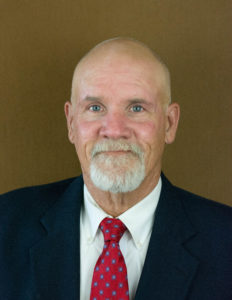Throughout the years, numerous policies and procedures have been developed to increase safety awareness and improve workplace safety. Ideas come and go based on needs, studies, and action plans. The action plans seem more reactive as opposed to proactive. The key word, though, is active. Reactive, as the word itself suggests, usually follows an accident, but not always. Close calls and near misses can be equally as effective in focusing attention. Just the same, reactive measures are not ideal. Proactive measures are always best.
My objective is to shed new light on the old practices of hazard hunting. The reason hazard hunting is an effective practice is because it enlists the participation of the people actually doing the work. Regardless of whether it is an experienced employee or a new employee, everyone gains—because the experienced employee and the new employee each bring different perspectives. With the advent of new equipment and improved technology almost daily, new eyes and experienced eyes have valuable input. Meanwhile, it makes sense to try always to improve policies, procedures, and equipment.
Traditionally our oil and gas business has relied on common sense, which is how we can improve on speed, safety, and production. As we all know, common sense is not as common as it used to be. There are pros and cons to that thought process. In the old days, we questioned ourselves on how we can make this task/equipment be worm-proof without sacrificing speed and efficiency. The cost of the proposed change was always a huge factor as well. Regardless of the technical changes we have experienced in the last five to ten years, the goals have not changed, only the expectations have. We may have engineered new ways to achieve more production with fewer people, but we are still far away from reducing exposure to accidents to zero percent. We are making huge advancements in technology. Robotics have come a long way, but the stark reality is that we need people. With that being said, we still need to reduce exposure to hazardous situations.
I contend that it takes a process. Identify the hazards. Mitigate the hazards as they become known. And therein lies the need for the “hunt.” Usually, the research team is enlisted after the unforeseen hazard or accident rears its ugly head, either by an accident or close call. Then, if the company is proactive, a team is comprised of safety, operations, engineers, and, ultimately, executives. The goal is to reduce residual risk and/or eliminate hazard or exposure by mechanical innovation, processes, procedures, and training.
In thinking about safety efforts, I often think of the work of sculpting Mount Rushmore. I would have loved to have met the in-house safety representative. It took 11 years to complete Mount Rushmore, carved by men with jack hammers and chisels on the side of a mountain, many of them hanging from ropes tied onto rudimentary seats, while occasionally using dynamite/explosives, without OSHA, EPA, and Safety Oversight Board members. And still, they achieved zero fatalities. Sadly, there were fatalities later on, after Mount Rushmore’s completion, due to silicosis. There were six recorded fatalities as a result of the dust exposure. I feel confident had they known of the dangers of silicosis, they would have mitigated those dangers as well.
My point of that specific example: I am confident that at some time during that monumental project, someone mentioned or complained about the problem of dust. They had mitigated all the other hazards that they were aware of. You can’t tell me that no one complained of the dust or the difficulty breathing. The guys that were in the middle of the daily work knew that breathing dust for long periods of time had issues. Maybe the foreman said put a wet rag over your face and get back to work.
My point is that the personnel who actually do the work know the hazards. Hazard hunts are an effective way, a means, of empowering, discovering, and communicating perceived or known or unknown hazards. Certainly, the employees have been told that, if they see or perceive of a hazard, they should bring it to someone’s attention. Most of the time you can give instructions to do so. However, if no action is taken, it is an automatic given that employees will realize that bringing it to our attention carries no weight. Such behaviors can be the quickest way to silence future input.
Hazard hunts are a valuable tool. It is not new to anyone in our industry. It is an opportunity to communicate and make the employee feel like a part of the team. You can make it fun, and you can make it profitable. If the employees are looking for hazards, known or unknown, it is a win. If credence is given to their efforts, it is a huge win. If participation prevents an accident, or even if it does not, the mere fact they are looking for hazards is a win for the company. I welcome any new programs that are effective. I also see value in some of the old methods as well.
Some old ways still work. New ways and progress do, too.
Thank you for reading. Thank you for your interest in safety.
Dusty Roach is a safety professional based in Midland. He is also a public speaker on subjects of leadership and safety, and he maintains a personal website at dustyroach.com.










